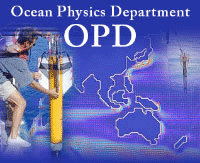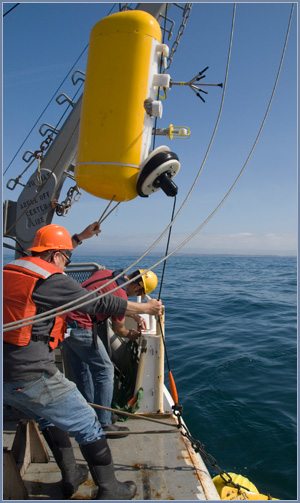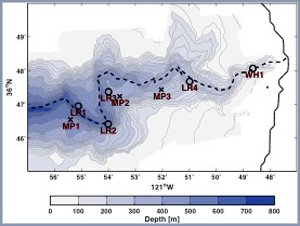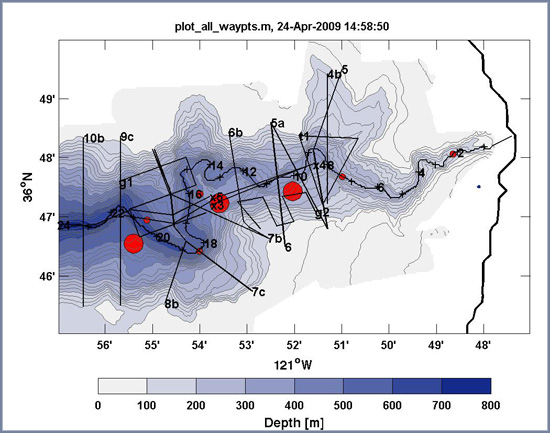
|
|

Mike Gregg
Principal Investigator
Matthew Alford
Co-Principal Investigator
Ren-Chieh Lien
Co-Principal Investigator
Glenn Carter
Principal Investigator
Univ. of Hawaii, Manoa
Dave Winkel
Oceanographer
Danielle Wain
Postdoctoral Researcher
Univ. of Washington
Rob Hall
Postdoctoral Researcher
Univ. of Hawaii, Manoa
NSF
OCE 07501420
OCE 0751226
|
OBSERVATIONS Between 14 and 22 February 2009 Matthew Alford set moorings in the canyon from the R/V Wecoma (see map, right). Instruments and bottom depths were:
On 13 April, WH1 was recovered and reset at the head of Ascension Canyon.  McLane profilers measured profiles of vector velocity, turbidity, temperature and salinity every 30 minutes with 2-m vertical resolution. |
 Between 4 and 27 April the full group took Wecoma back to the canyon for intensive measurements with SWIMS3 (pictured below), a depth cycling towed body, and Advanced Microstructure Profilers (AMPs). For contrast with Monterey, a day of SWIMS3 and AMP observations were planned for nearby Ascension, a short, narrow canyon, but heavy swell limited neap observations to 14 microstructure profiles. 
SWIMS3 runs were made principally across the canyon, starting seaward of the Gooseneck Meander, and continuing landward around the next bend. Most sections were sampled with repeated runs, extending over 25 hours to obtain averages over a cycle of the M2 semi-diurnal tide. |


|